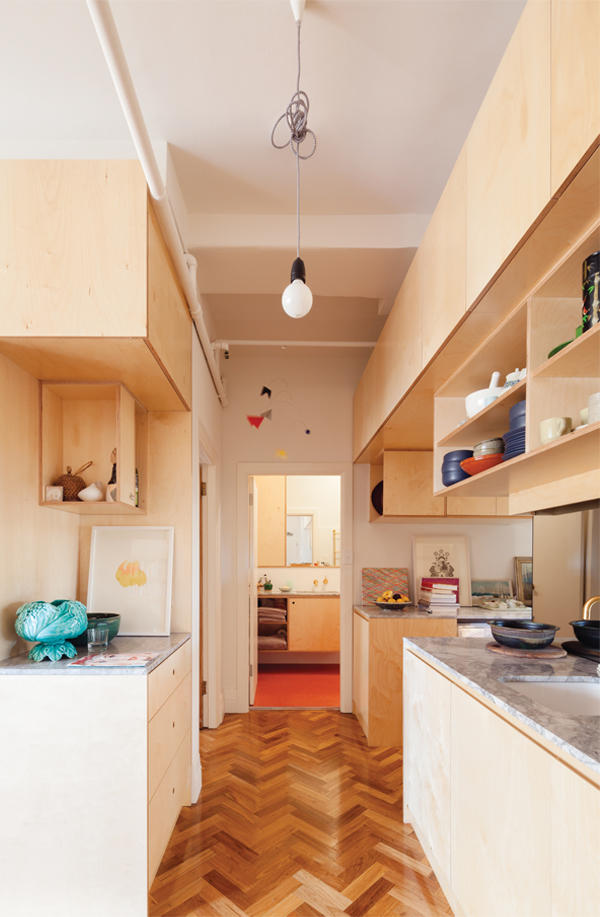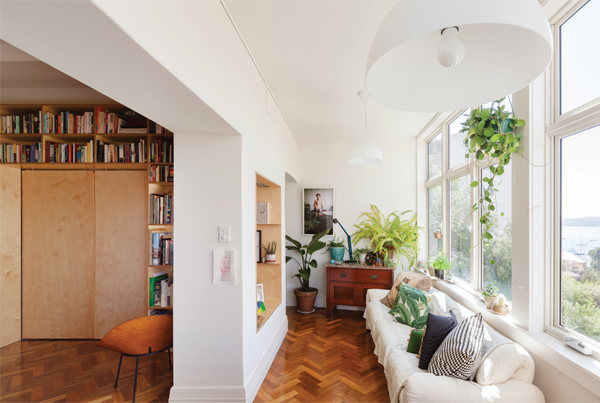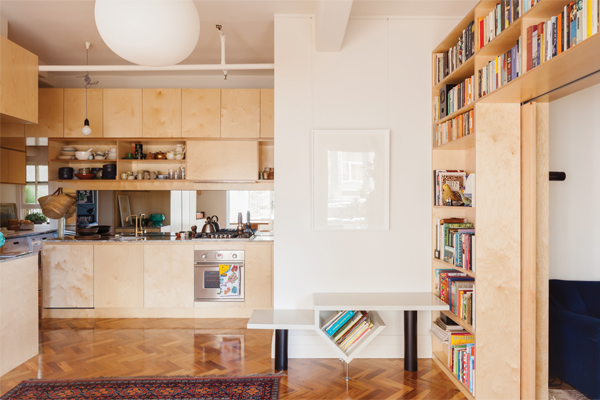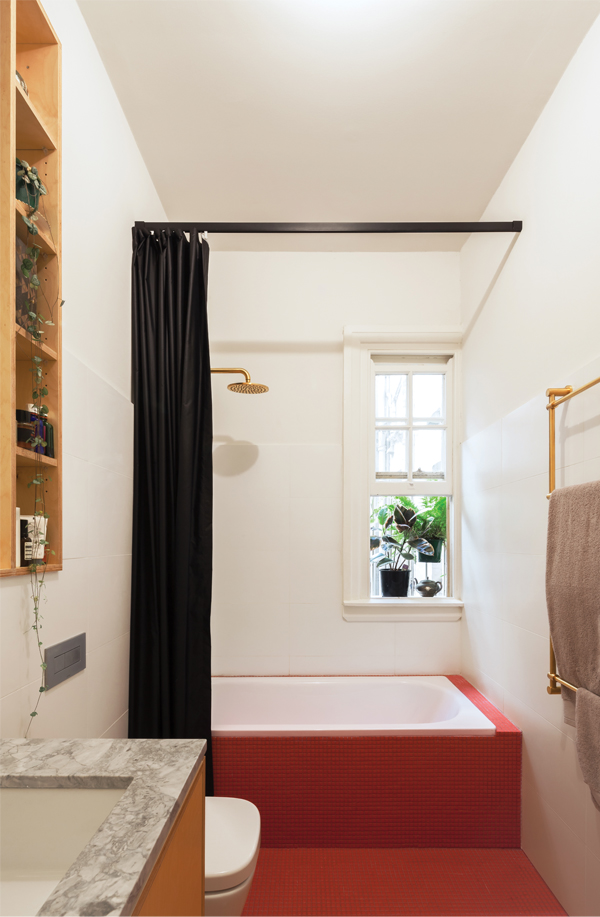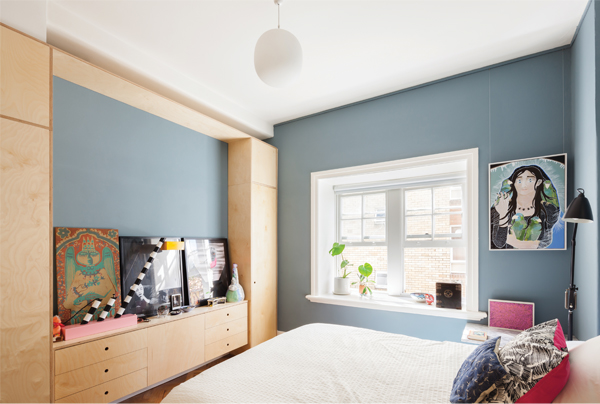
Healy King Apartments by Tribe Studio
Healy King Apartments by Tribe Studio
Share
Written by Gillian Serisier, Photography by Katherine Lu.
The antithesis of the sparse and polished nature of hotel chic living, Tribe Studio’s approach to creating a home is never shy of the personal. The elements of life, rather than aspiration, are carefully layered, respected and, indeed, loved. This is not an approach for the faint of heart: art will be seen, books will be out, bowls of stuff will be lovingly displayed. Much as a vase of flowers has a contained and framing regard for the haphazard fall of stems, florets, leaves and buds, Tribe Studio, with principal Hannah Tribe at the helm, frames the accoutrements of clients’ lives within a contextualised and highly considered tableau. Moreover, and in keeping with Tribe’s approach that posits the home as a portrait of her clients, the solution is never the same.
Healy King Apartment makes this point well. Realised as a cabinet of curiosities, the 1930s apartment in Sydney effectively houses and displays a vast and varied collection of predominantly modernist and postmodern art and collectables. “We were inspired and delighted by our clients’ eclectic collection of wonderful things and their unique curatorial talent,” says Tribe, of a collection that includes Phillip Low’s acrylic prisms, Tobia Scarpa’s Artona table and lamps by both Ettore Sottsass and Michele De Lucchi (both Memphis 1981). That said, there is nothing of the museum or the rarefied in the way these objects are incorporated into the home. Rather, as typified by a Sepik River tribal mask hanging casually from a door, their presence is a natural extension of the living environment. To wit, Roger McClay’s Kone chair (manufactured 1949-1961) is placed for use as a chair in the junction between the book-lined living room and the sunroom.
Aesthetically, the warmth of the aged ply and low curves of the chair create an enriching dialogue with the straight geometrics of the ply shelving lined rooms (which are further softened by the proliferation of a well-read book collection) and rich tones of the herringbone parquetry flooring (Tallowood by Danias Timber). Compositionally, the chair creates a junction that sweeps the eye from one space to another, while simultaneously acknowledging and demarking the spaces as separate. More importantly, however, it poses a welcoming spot to curl up and read, whether the day asks for the cocooning comfort of the dining room or sun spilling decadence of the sunroom. Alternatively, the Maralunga sofa by Vico Magistretti for Cassina (Cult) in sumptuous blue velvet offers quite a different experience.
And it is in this kind of execution that Tribe stands out from the rest. The home is full, yet it’s not cluttered. Nor is it styled so close to death that it will lose its form as soon as real life commences. Instead, Tribe creates a balance of areas that are highly active, with areas of extreme calm. “The design has a mix of open shelving and hanging space to showcase the collection, balanced with tonnes of closed storage. We wanted the clients to have the option of revealing and concealing… and moving the collection around,” says Tribe.
The aforementioned bookshelf-lined dining room, for example, is punctuated by a single large Persian rug and wall of cabinetry. On the one hand, the richness of the rug anchors and contains the room, while the simple plane of cabinetry provides a visual pause. Effectively, Tribe approaches the meta-composition of a home before the parts. In doing so, spatiality and flow coalesce to afford pockets and volumes for expanse and detail to co-exist and support, rather than juxtapose.
Lighting plays a pivotal role in these constructs and, for Healy King, Tribe has drawn on a range of white shades and illumes to punctuate and anchor each space separately, while visually uniting the whole. Moreover, in combining eras and styles, the design negates any tie to fashion or material of the time. This is important. Ply, having enjoyed a newfound place in interior design over the past five years, as cost- effective, warm and simple, has become a defining element of this era in Australian interior design. Yet its use need not be time defining in any limiting sense. In the Healy King model, the ply, while bringing all the elements innate to the material, also asserts the timeless thinking of the Bauhaus, where material honesty is both acknowledged and applauded.
“There is an honesty to ply that I love. I like that it has a real edge – not an applied strip,” says Tribe. By shifting between Jasper Morrison’s Glo-Ball C (Flos 1999, Euroluce), George Nelson’s Bubble Lamp Ball (1947 – Spence and Lyda), Ferruccio Laviani’s FL/Y ceiling light for Kartell (2004 – Space Furniture) and the seemingly bare bulb and tangled cord of a NUD Globe pendant (Surrounding), this timelessness is brought home. Just as importantly, the simplicity of colour and form provides a sculptural element, while focusing the overview to a central apex. In doing so, the events of the room’s perimeter exist peripherally until engaged, at which point they are brought into focus and take centre stage.
Tribe’s consideration continues with a bathroom and kitchen that meld the warmth and utility of Finnish birch plywood (Bruynzeel) with sumptuous layers of stone (white dolomite quartzite), brass and colour. The kitchen itself was pulled from being a tiny event at the rear to centre stage, while shifting the bathroom to the periphery allowed the bedrooms to expand. “It’s really rather a radical realignment to eke out every valuable morsel of space,” says Tribe. The bathroom, has a slight seventies feel, thanks to the square framing of the bathtub, while the kitchen is open, practical, beautifully detailed and a socially active zone for keen cooks and entertainers.
The detail of the apartment per se is in many ways unusual in that the tell-tale signs of its 1930s heritage, such as the double-faced skirting boards and internal French doors, have been left intact, but painted a uniform white. In doing so, these elements remain present as form without posing a defining characteristic. Conversely, beautifully crafted arts and crafts doors have been included as features that marry superbly with the ply, flooring and rugs to blur eras and unite the palette.
The defining element of the apartment, then, is the people who occupy it. In many ways, this is testament to Tribe’s portrait approach. That said, to some extent, when we create our own homes, we are creating a reflection of our selves. What makes this a portrait is the fact of its consideration. These are the elements of character arranged, constructed, considered and allowed to be contextually framed within a living environment harmonised to the richly nuanced process of life.
Inside 89 is on newsstands now, and available through Zinio.
You Might also Like



